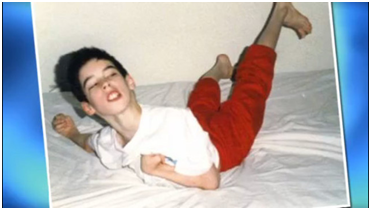Dystonia Causes, Symptoms, Diagnosis and Treatment

What is Dystonia?
Dystonia is a disorder characterized by involuntary muscle contractions that cause slow repetitive movements or abnormal postures. The movements may be painful, and some individuals with dystonia may have a tremor or other neurologic features. There are several different forms of dystonia that may affect only one muscle, groups of muscles, or muscles throughout the body.
Causes of Dystonia
Dystonia with no obvious cause, or caused by a genetic mutation, is known as primary dystonia. If dystonia is a symptom of another condition, it’s known as secondary dystonia.
Primary dystonia
Most people with primary dystonia don’t have an identified cause. A minority of cases are associated with genetic mutations, which usually begin in childhood.
There are currently over 12 types (or sub-types) of dystonia linked to genetic mutations, including generalised dystonia, dopa-responsive dystonia and paroxysmal dystonia.
The genes responsible for these types of dystonia are passed down through families in a pattern that’s known as autosomal dominant. This means if you have one of these abnormal genes, there’s a one in two chance your children will inherit that gene and develop dystonia.
Secondary dystonia
Secondary dystonia, also known as acquired dystonia, can have a wide range of causes, including:
- Huntington’s disease
- Wilson’s disease
- Multiple sclerosis cerebral palsy
- Infections such as HIV or encephalitis
- Injury to the skull or spine
- Brain tumours
- Stroke
- Poisoning
Symptoms of Dystonia
Patients’ signs and symptoms will depend mainly on the type of dystonia they have. Below are some common examples:
Cervical Dystonia
- Twisting of the head and neck
- Pulling forward of the head and neck
- Pulling backwards of the head and neck
- Pulling sideways of the head and neck.
Blepharospasm
- Photophobia (sensitivity to light)
- Irritation in the eye(s)
- Excessive blinking, often uncontrollable
- Eyes close uncontrollably. Patients with severe symptoms may find it impossible to open their eyes for several minutes.
Oromandibular Dystonia
- This segmental, late-onset type of dystonia affects the jaw and mouth muscles. The patient’s mouth can pull outwards and upwards.
- Some patients may have dysphagia (problems swallowing).
Writer’s cramp
- Musician’s cramp
- Typist’s cramp
- Golfer’s cramp.
Generalized Dystonia
- Muscle spasms
- An abnormal, twisted posture, due to contractions and spasms in the limbs and torso
- A limb (or foot) may turn inwards
- Parts of the body may suddenly jerk rapidly.
Paroxysmal Dystonia
- Mental stress
- Tiredness (fatigue)
- Consuming alcoholic beverages
- Consuming coffee
- A sudden movement.
Diagnosis of Dystonia
To diagnose dystonia, your doctor will start with a medical history and physical examination.
- Blood test
- Urine tests
- MRI or CT scan.
- Electromyography (EMG).
Treatment of Dystonia
There is no cure for cervical dystonia. In some people, signs and symptoms may disappear without treatment, but recurrence is common. Treatment focuses on relieving the signs and symptoms.
- Medications
Botulinum toxin, a paralyzing agent often used to smooth facial wrinkles, can be injected directly into the neck muscles affected by cervical dystonia. Examples of botulinum toxin drugs include Botox, Dysport, Xeomin and Myobloc.
- Therapy
- Surgical procedures
By : Natural Health News




